All products featured are independently chosen by us. However, SoundGuys may receive a commission on orders placed through its retail links. See our ethics statement.
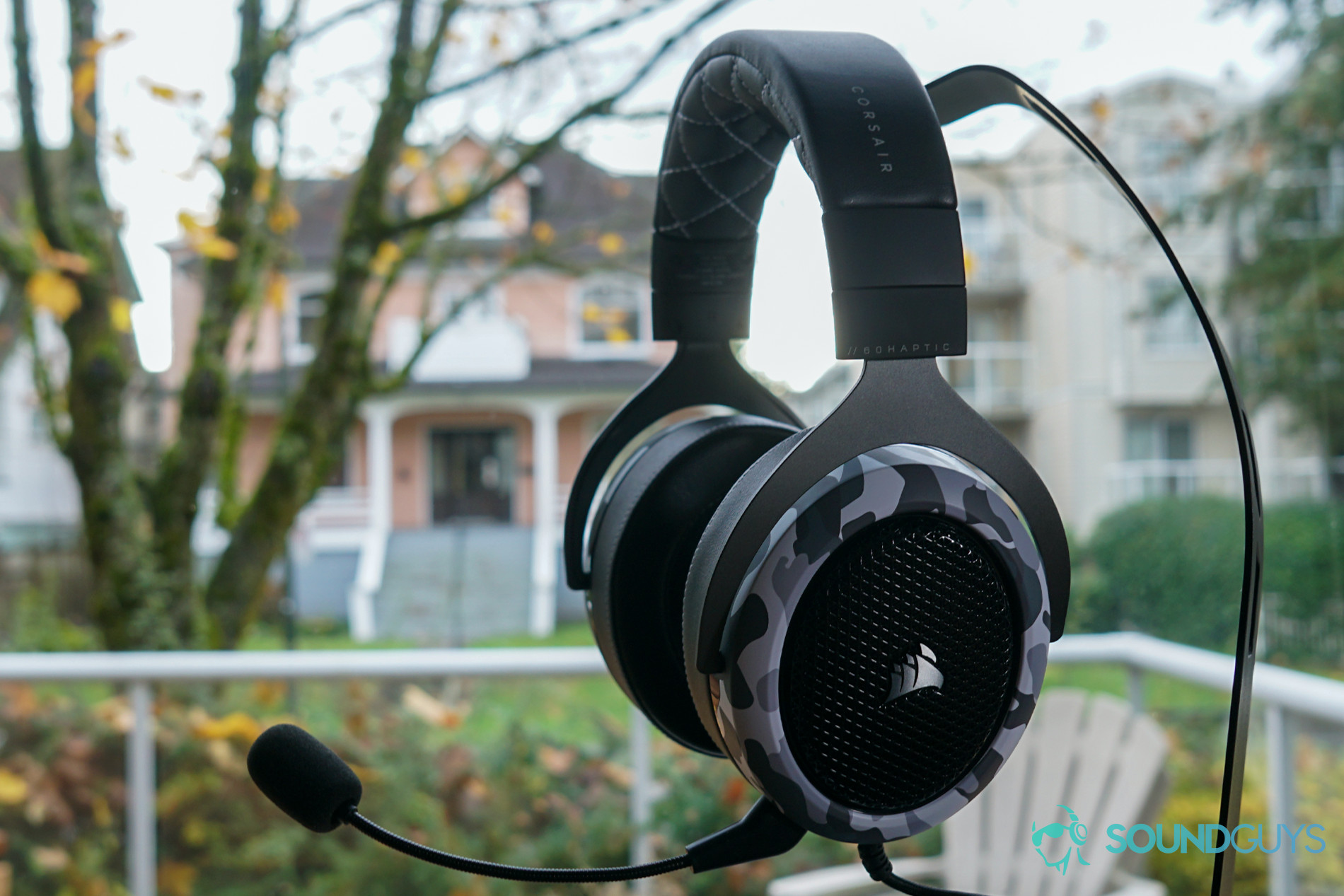
Corsair HS60 Haptic review
January 31, 2022
Corsair HS60 Haptic
Back when we reviewed the Corsair HS60 Pro Surround, we were impressed with the balance it struck between performance, features, and price—the headset managed to include meaningful features without gimmicks for a relative bargain. That headset’s follow-up, the Corsair HS60 Haptic, seems to go in the other direction, throwing haptic feedback into the mix. That’s right—this gaming headset rumbles.
Is the HS60 Haptic worth the price hike?
Editor’s note: this Corsair HS60 Haptic review was updated on September 7, 2022, to update formatting, add a frequently asked question, and include the Razer Barracuda X (2022) as an alternative.
Gamers who feel like a headset that only boosts bass just doesn’t go far enough in the pursuit of explosions you feel at the base of your spine. If you also like your music extra bassy, this headset has you covered.
What is the Corsair HS60 Haptic like?
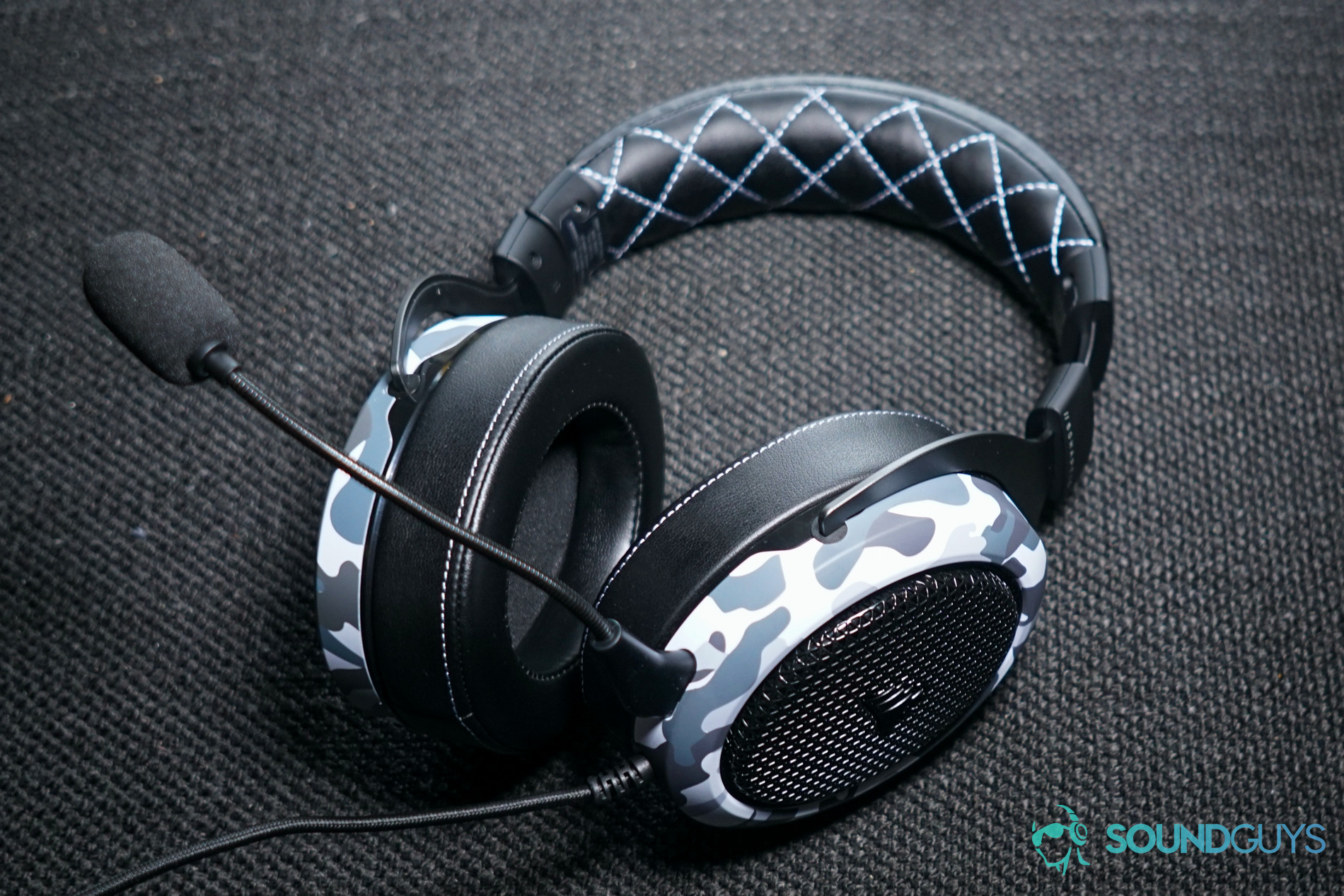
The Corsair HS60 Haptic is kind of an odd thing. Updates to existing gaming headsets typically make incremental improvements, adding one of a handful of more premium features—usually, we see stuff like virtual surround sound or wireless audio. However, instead of taking that approach, this gaming headset brings some pretty stark trade-offs.
On paper, pretty much everything is the same as its predecessor. The Corsair HS60 Haptic has the same brushed aluminum frame, with the same leatherette-covered ear pads and headband. Where the HS60 Pro Surround was a 3.5mm headset with a USB adapter, the HS60 Haptic’s braided cord now just terminates in a USB plug. The memory foam pads are flexible and paired with the ample tilt range of the headphone hinges, they make it easy to get a decent seal, unless you have glasses. The real changes are under the hood, at least aside from the headset’s shift to a more, ah, tacti-cool aesthetic.
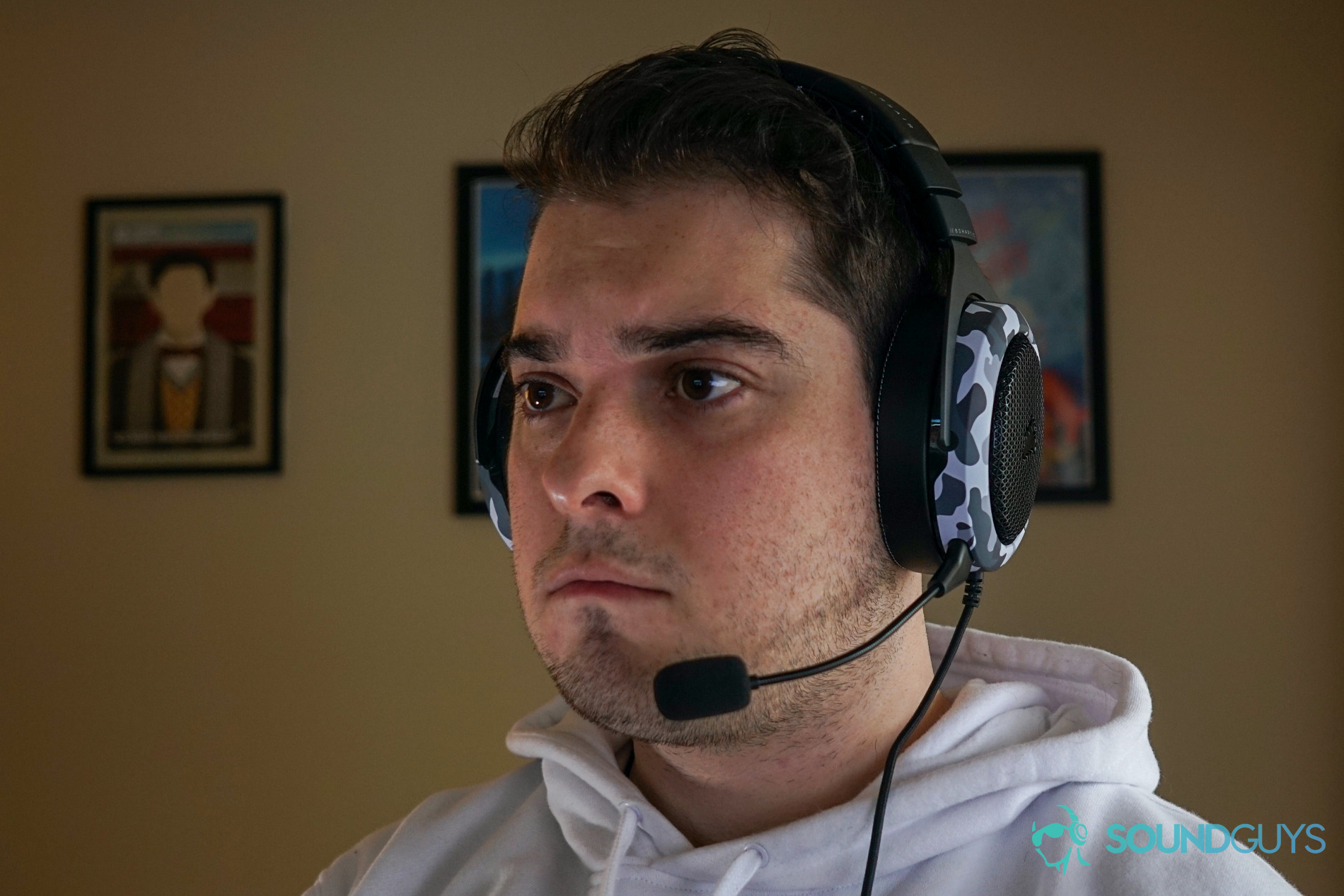
Where its predecessor relied on the iCue app for its added features, the Corsair HS60 Haptic offers a rather unique new hardware feature—haptic bass response. When a sufficiently loud, sufficiently low sound plays through the headphones, they vibrate using haptic motors in the ear cups. According to the Corsair website, this feature lets you really feel the explosions and intensity of the battlefield. If you’re wondering what that means in more concrete terms, well, it beats me. It feels kind of nice, at least.
Actually using the headset is very straightforward—just plug it in and you’re set. Most PC gaming headsets require an app to unlock their full feature set—you couldn’t get surround sound in the previous HS60 without it. However, while the Corsair HS60 Haptic still supports Corsair’s iCue app for adjusting its EQ settings and turning on mic monitoring, the headset doesn’t rely on it for anything. This time around, virtual surround sound comes from Windows Sonic, which is built into Windows 10 and enabled in the desktop audio settings.
The Corsair HS60 Haptic is a plug-and-play affair.
The haptic feedback feature is all hardware-based and controlled by a dial on the right headphone. The rest of the controls are pretty straightforward too—there’s a headphone volume dial and a mic mute button on the left headphone, and that’s it. You can even navigate the headset’s built-in EQ presets by just pressing in the headphone volume dial.
How is gaming with the Corsair HS60 Haptic?
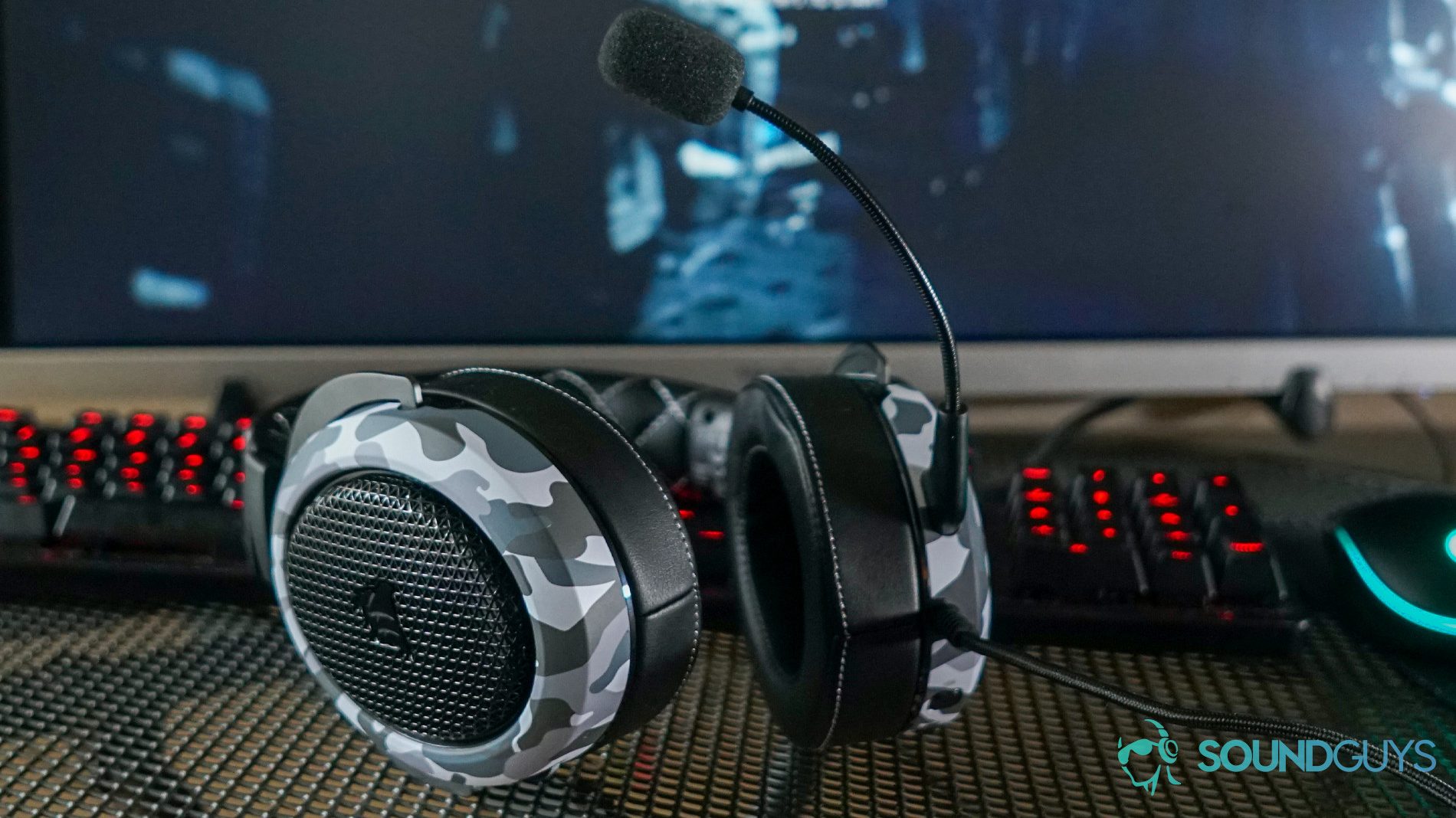
Gaming with the Corsair HS60 Haptic is pretty much just as straightforward as getting it set up. It’s comfortable enough to wear for long stretches, and the cord is long enough that you shouldn’t run into any issues sitting at your PC.
The headset did a great job handling the diverse audio demands of games like Hades and Apex Legends. Windows Sonic isn’t the most aggressive surround sound standard in the world, but it handled the demands of Apex well enough. However, the haptic feedback felt a little inconsistent in-game. The feature seems to function on a bass and volume threshold, so it won’t go off if a sound is too quiet or to high pitched—in my experience, that meant it almost never went off in a lot of games.
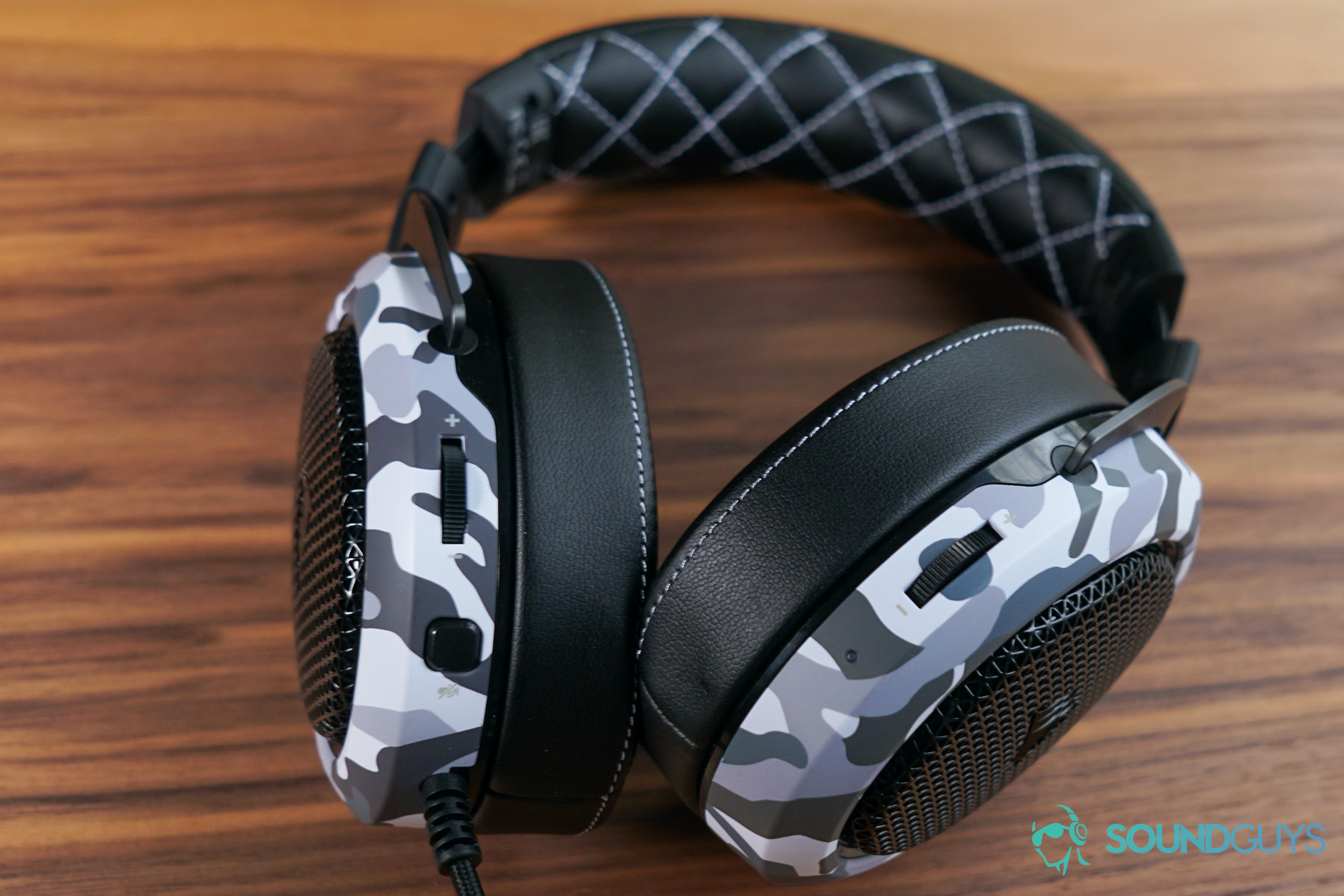
The recently remastered Halo 3 ODST should be a great example of the rumble really kicking into high gear, given the shooter-oriented taglines covering the headset’s store page. However, the feature rarely reacted to in-game audio. Whether I was dodging a hail of plasma fire or lobbing grenades at Brutes, the only thing that consistently activated the rumble was the game’s orchestral score, which actually made in-game sounds harder to hear.
Additionally, this is a wired USB-A gaming headset, which pretty much means it’s just good for use on a PC. If you’ve got a desktop PlayStation 4 setup, this’ll be fine for that too, but the HS60 Haptic’s cord certainly won’t reach across any living rooms. This is a little disappointing compared to the HS60 Pro Surround which at its most basic level was a 3.5mm headset, and therefore compatible with Xbox One, PlayStation 4, and Nintendo Switch regardless of your living room setup.
Does the Corsair HS60 Haptic block out noise?
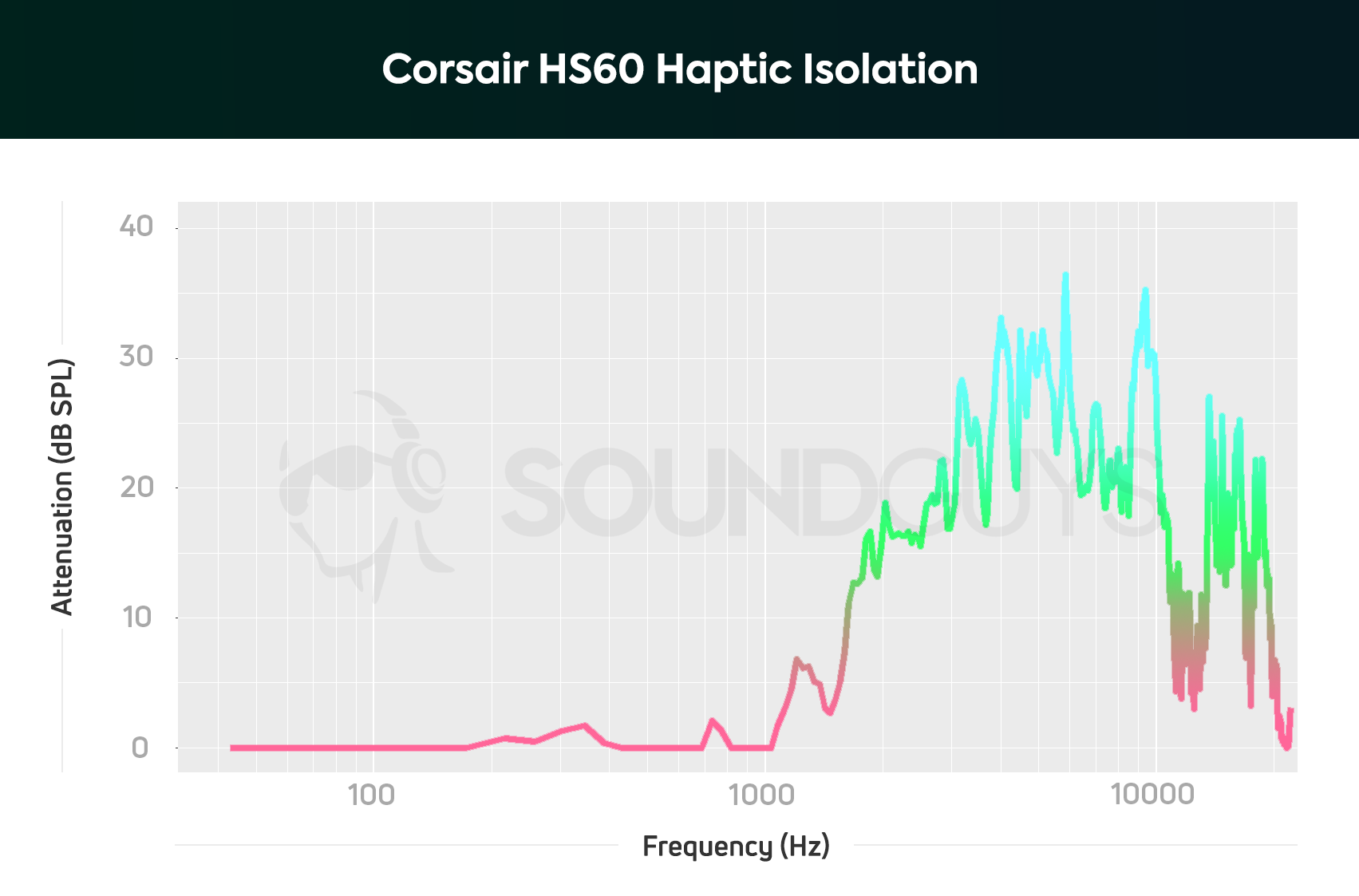
The Corsair HS60 Haptic has slightly below average isolation for a gaming headset. It’s hard to pinpoint exactly where that comes from, but the bottom line is this headset won’t do much to isolate you from much more than the whirr of a fridge. However, given that this is pretty much a PC-bound gaming headset, it won’t have a lot of outside noise to compete with.
Unfortunately, your main tool here for blocking out noise will be turning the volume up. That’s already not great, but coupled with the fact that the haptic feedback is tied to headphone volume, you may feel even more inclined to keep turning the volume up—I know I certainly was—which can put you at risk of noise-induced hearing loss.
How does the Corsair HS60 Haptic sound?
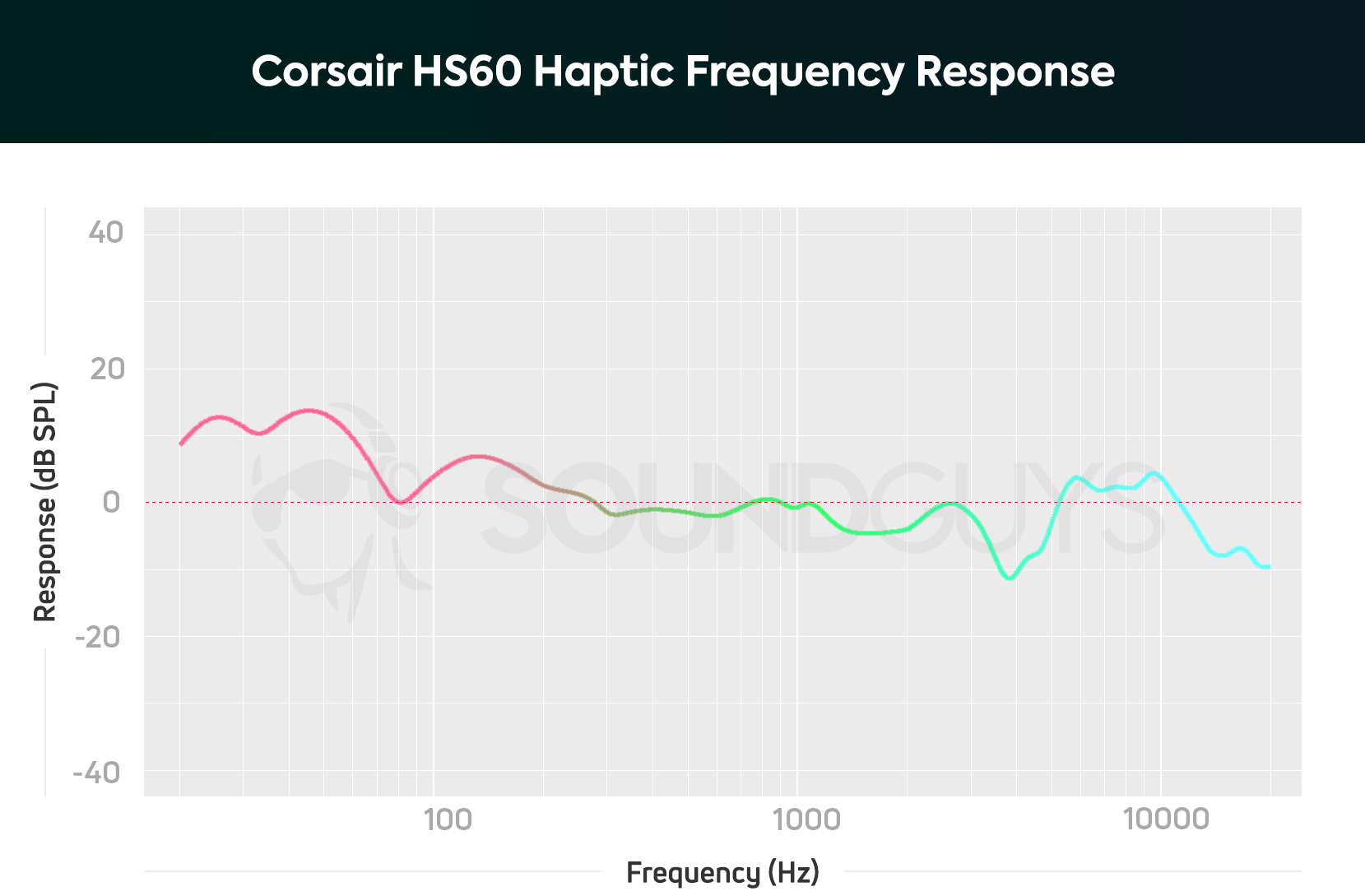
The Corsair HS60 Haptic offers what feels like quintessential audio output for a gaming headset, which is to say, it boosts the hell out of the bass. Bass output up to 80Hz is amplified, at its peak by almost 15dB (a 3x volume increase), and the headset doesn’t approach very accurate levels until around 300Hz.
Lows, mids, and highs
In music, this means songs and genres where you really want the bass to have some oomph will sound great on the Corsair HS60 Haptic. In fact, the haptic response actually feels far more consistent listening to music than in-game audio. If you’re someone with nostalgia for riding around in an old beater car that’s shaking from how much you’ve cranked up and blown out the bass, the vibration of the headset might actually be what you’re looking for.
In Immaculate Taste by Engelwood, the synthetic drums that set the pace of the song will have your head positively vibrating as the dreamy sax weaves in and out. It’s hardly an accurate listening experience, but it sure is pleasant.
In game, this kind of frequency response means that the sounds of explosions and gunfire will be a lot louder than just about everything else in game. Even if the haptic response is inconsistent, you’re still going to miss plenty of the subtler sounds that populate many games’ soundscapes.
Hold up! Something’s different:
This article’s frequency response and isolation charts were measured with our old testing system. We have since purchased a Bruel & Kjaer 5128 test fixture (and the appropriate support equipment) to update our testing and data collection. It will take a while to update our backlog of old test results, but we will update this review (and many others!) once we’re able with improved sound quality measurements, isolation performance plots, and standardized microphone demos. These will be made obvious with our new chart aesthetic (black background instead of white). Each new mic sample begins with the phrase, “This is a SoundGuys standardized microphone demonstration …”
Thank you for bearing with us, and we hope to see you again once we’ve sorted everything out.
How is the microphone on the HS60 Haptic?
The Corsair HS60 Haptic features pretty much bog-standard audio output for a gaming headset microphone. There’s a significant de-emphasis in the bass range, no doubt to avoid the proximity effect, where the bass in someone’s voice blows out a microphone when they’re too close to it. However, the flip side of that is people with very deep voices will come through a little bit tinny and a little bit quieter than they otherwise would. This headset mic doesn’t have the volume or clarity issues its predecessor did, at least. Listen for yourself:
How does the microphone sound to you?
Should you buy the Corsair HS60 Haptic?
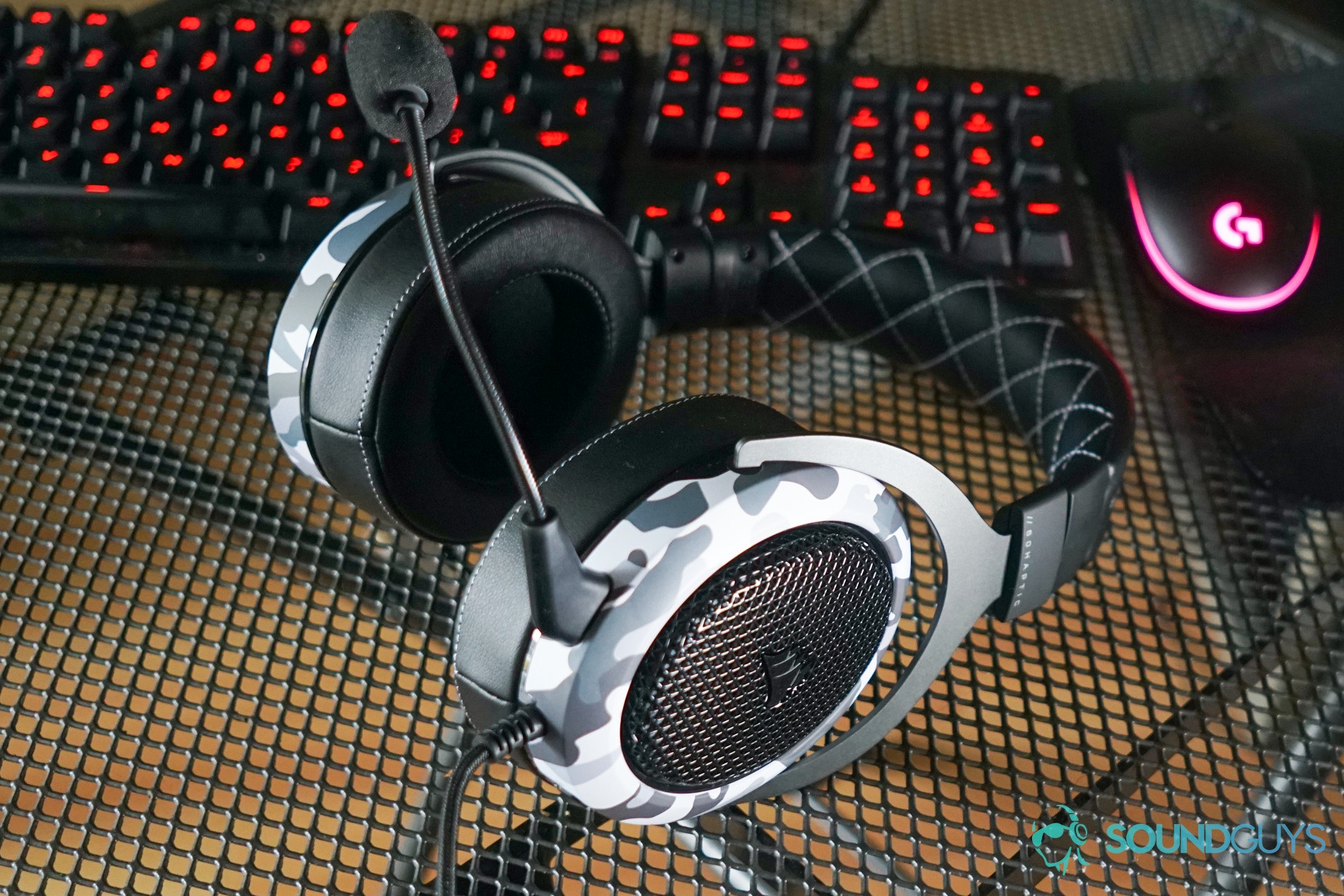
If the idea of rumble in your headphones is really exciting to you, have at the Corsair HS60 Haptic. Otherwise, it might be prudent to look at options other than this wired headset.
The Corsair HS60 Haptic is a good gaming headset. It’s comfortable, easy to use, and it may have become my favorite headphones for listening to vaporwave and citypop. However, the haptic feedback doesn’t add much to the gaming experience, and the headset’s bass-over-everything approach is hardly accurate.

What should you get instead of the Corsair HS60 Haptic?
If you’re really into the idea of headphones with rumble, the other option on the market is the Razer Nari Ultimate, which runs into a lot of the same issues as Corsair HS60 Haptic, but it’s also wireless. Perhaps you like the idea of a USB wire tethering you to your computer (and don’t want to shell out for the Nari Ultimate). In that case, get the Razer Kraken V3 HyperSense instead. It’s the Razer Kraken V3, but with shaking headphones.
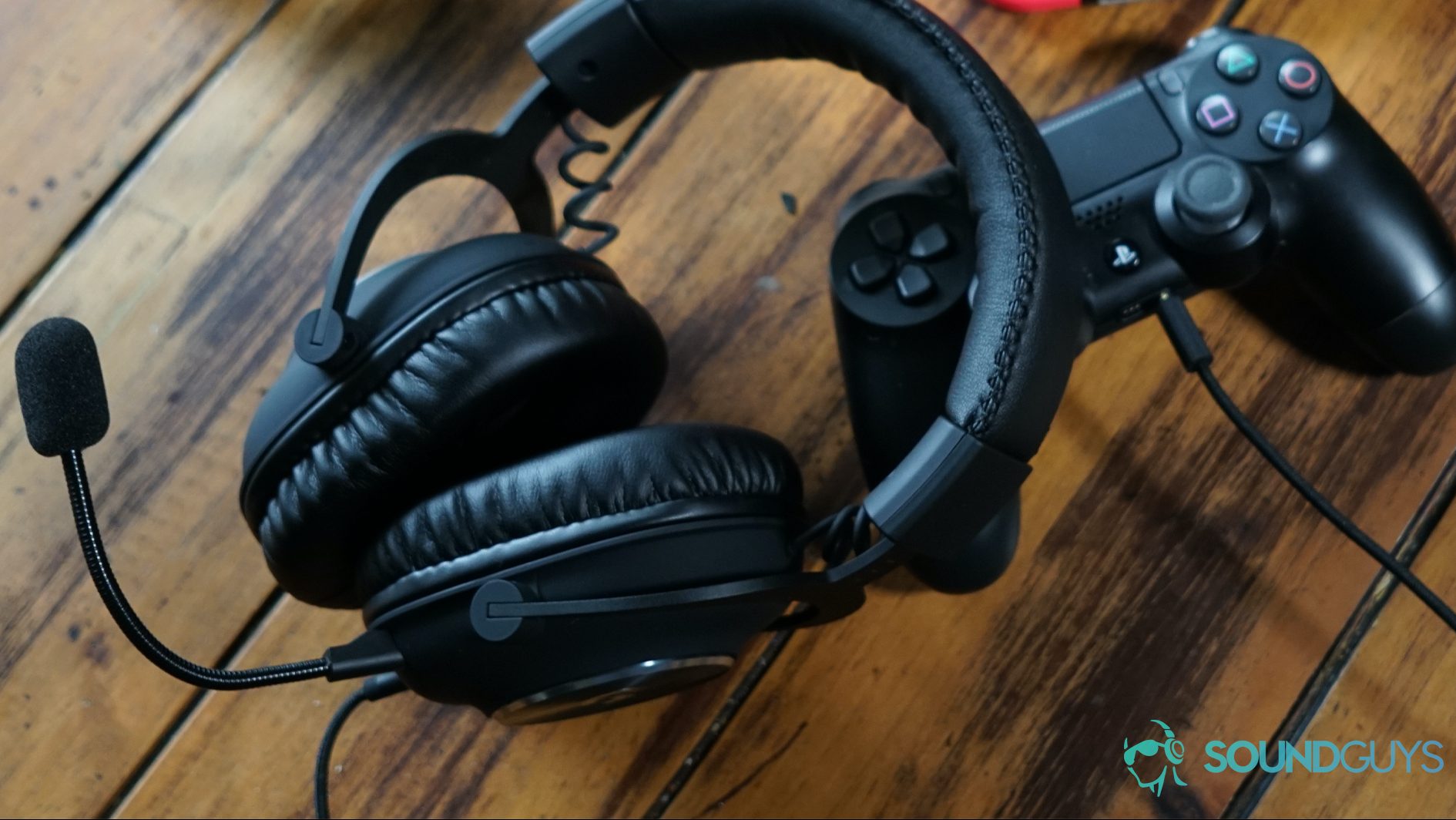
If rumble isn’t something you’re all that interested in, PC gaming headsets like the Razer BlackShark V2 and Logitech G Pro X check all the same boxes (except for the rumble), with more accurate microphone and headphone audio, and more robust software features.
If you’re a console gamer, you probably shouldn’t get this headset—it’s barely compatible with the hardware, and arguably rendered useless in most living room situations. Headsets like the HyperX Cloud Flight S or SteelSeries Arctis 1 Wireless bring more features and more platform compatibility, plus they offer some of the best battery life on the market. Even the Corsair HS60 Pro Surround would be a better console option—in fact, it might be worth a look if you’re a PC gamer too. The HS60 Haptic is compatible with fewer platforms, and it’s $60 more expensive—that’s a lot to ask for a gimmick.
If you want a cheaper headset that works on all platforms, the Razer Barracuda X (2022) is a great option. It has Bluetooth, 2.4GHz dongle, and wired connectivity options, it’s super lightweight and comfortable for long gaming sessions, and it has a great microphone. If you don’t want haptics, or any bells and whistles for that matter, consider the Barracuda X (2022) for $99 USD.
Frequently asked questions about the Corsair HS60 Haptic
Yes, you can. Once you’ve downloaded the Dolby Atmos app, follow these steps:
- Connect the Corsair HS60 Haptic to your PC.
- Open the Dolby Atmos app.
- Select the Products tab.
- Click “Setup” under “Dolby Atmos for Headphones.”
- Select “Continue.”
- Test the sound of your headphones in the next window.
- Click “Continue.”
Yes, this headset and any headset that can connect to a PlayStation 5 is compatible with Sony’s virtual surround sound, 3D audio.